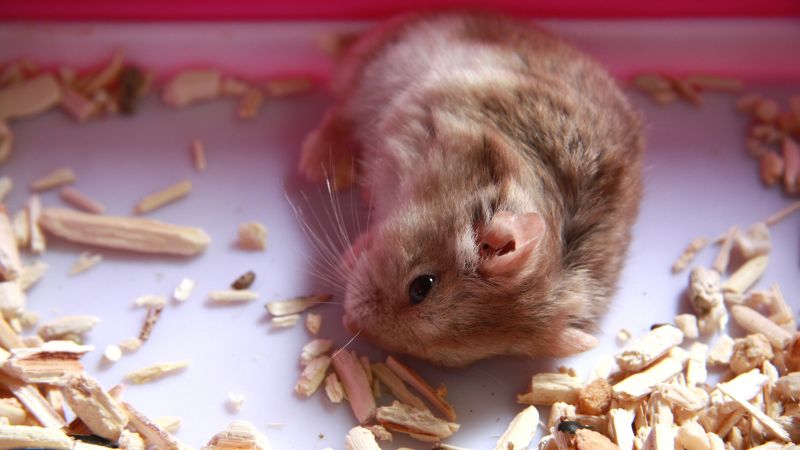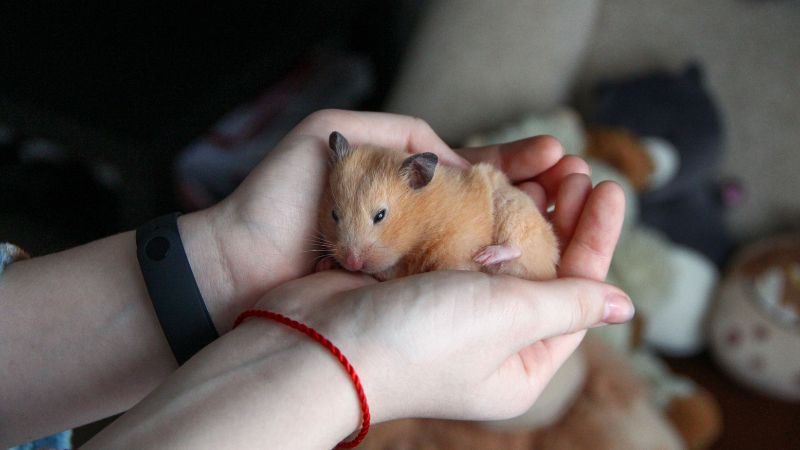
Can You Travel with a Hamster? A Comprehensive Guide
Traveling with a pet hamster isn’t as straightforward as it might seem. It requires careful consideration of your pet’s safety, comfort, and the logistics involved.

Losing a pet is always tough, and it’s important to know what steps to take when the time comes. This guide focuses on what to do with a dead hamster and some common questions you want to know.
There are a few kind and respectful ways to manage after your hamster dies.
If you’re at home, burying your pet is a good choice.
At a vet clinic, cremation is an option for your hamster’s farewell. Here are some steps to follow when your hamster dies:
Saying farewell to a pet is hard, but you can do it in a caring way. This includes taking care of their remains and looking after yourself too.
We suggest you read on to learn more about safe ways to handle your hamster’s departure, understand their typical lifespan, and recognize signs of their health declining.

Here’s a detailed guide on what to do when your hamster dies.
Before handling your hamster or its cage, wear waterproof or latex gloves. This is important for hygiene, especially if the hamster is ill.
If you’re at home, you can put your hamster in sealable bags, wrap it in fabric, or use a homemade box.
There’s some debate about using plastic bags, but ultimately, it’s your choice.
For a home burial, place the hamster in the bags and bury it at least three feet deep, away from other areas.
This is a suitable moment for a small funeral to say final goodbyes.
For a more formal option, hamster caskets are available, like this Bamboo Pet Memorial Box Coffin on Amazon.
If your hamster is unwell and you visit a vet, you have other choices.
Euthanasia is a hard but painless choice to end your pet’s suffering.
Afterwards, you can either bury your hamster at home or opt for cremation at the vet’s.
Cremation means you don’t have to handle the body disposal, and some vets offer a small urn for you to keep in memory of your pet.

Here’s what to do for cleaning after your hamster passes away.
Dispose of the gloves used during handling.
Clean the hamster’s cage thoroughly with disinfectant. This includes washing their toys, dens, bowls, and any items the hamster touched. Discard all straw and bedding from the cage.
Use a lot of hot water and soap for effective cage cleaning.
For an even deeper clean, consider using bleach or vinegar on the cage and accessories.
If you plan to use these items for another hamster, make sure they are completely dry. Residual cleaning chemicals could harm a new hamster.
Hamsters, adorable as they are, have a shorter lifespan compared to many other pets. They typically live up to three years, with hamsters older than a year and a half considered elderly.
To possibly extend their lifespan, regularly wash your hands. Hamsters can catch colds from their owners, which can be quite serious for them.
It’s also crucial to maintain a safe cage environment. Remove any potential hazards that might harm your hamster.
Be cautious with long hair and wire or mesh wheels, as these can lead to injuries like broken legs due to slipping.
Preventing injuries is key to helping your hamster live a fuller life.
Additionally, be aware of hamster behavior, especially if you have more than one. Hamsters are territorial and may fight to establish dominance in shared spaces. Monitor them and learn to recognize signs of serious fighting.
Intense fights can lead to severe injuries or even death.
For further insights into hamster territoriality and behavior, consider reading “Which Hamsters Can Live Together?“.

It’s okay to hold your hamster as it nears the end of its life, but it’s important to respect its space. If your hamster attempts to escape or bites, it’s best to leave it alone.
Hamsters can develop bonds with their owners, so they might seek your attention and affection in their final days.
However, be mindful that handling them could be painful, depending on their health issues. It could also cause them stress.
In short, if your hamster seems to want your attention, feel free to provide it. Just remember, they might not always want to be held, and it’s important to respect their wishes.
As hamsters approach the end of their lives, you may notice changes in their behavior and appearance. Their fur might thin out or their eyes could become dull. They often have lower energy levels and reduced appetite. Unusual behaviors like using their nest as a bathroom can also occur. These signs can indicate they are nearing the end.
For guidance on caring for a hamster, look into resources like “How To Care For A Hamster“.
Yes, hamsters can play dead, often as a response to high stress or anxiety. This instinctual behavior is a defense mechanism when they can’t find a place to hide. They might lie motionless, looking very convincing.
Some hamsters have even been trained by their owners to play dead, but this is not common.
If you find your hamster playing dead, it’s crucial to identify and remove the stressor causing this behavior.
The time it takes for a dead hamster to start smelling depends on the temperature. In the desert, their natural habitat, they may start to smell in about ten hours.
In your home, a dead hamster will likely begin to smell badly after 3 days. So, keep a close watch on your hamsters.
Remember, hamsters can pretend to be dead. It’s not good for them to do this for too long.
If your hamster isn’t responding for a while, it might not be just playing.
You may want to know how to check if a hamster is dead. If you’re not sure if your hamster is dead, try these steps:
Gently warm them up, but be careful not to overheat them. A heat lamp can help wake them from this state. You can find such lamps on Amazon.
Look for anything in their cage or room that might stress them out, like an injury or a scary situation, such as another pet.
Remove any other pets from the room and wait a bit. If your hamster doesn’t return to normal, it might mean they’re not just pretending to be dead.
When dealing with the passing of a hamster, you might have several questions. Here’s more information to assist you:
Is my hamster dead or hibernating?
Understanding the difference: Hamsters, especially in colder environments, may enter a state that resembles hibernation. This state can be mistaken for death due to reduced breathing and low responsiveness. To differentiate, observe for subtle breathing or place them in a warmer environment to see if they revive. For further insights into hamster hibernating, consider reading” Do Hamster Hibernation? You Need To Know”
Is it legal to bury a hamster in the US?
In the US, there aren’t any country-wide rules about burying pets. Usually, if you want to bury your pet hamster at home or on your land, you can, but you should be careful. Make sure you’re doing it safely and correctly.
Is it ok to bury your hamster in the backyard/garden?
In states like California, Florida, Illinois, New York, Georgia, Maryland, Michigan, Pennsylvania, New Jersey, and Texas, you can bury your pet in your backyard if it’s done safely and doesn’t cause any trouble.
Burying your hamster in your garden is something many people do. Pick a place where it won’t be disturbed and dig a deep hole (around 3 feet is good). You might want to put a plant or a small stone there to mark it. Just be sure this is okay with your local area’s rules and it won’t cause any health problems.
Saying farewell to a beloved pet is never easy.
When it’s time to handle your hamster’s remains, the kindest choices are burial or cremation. How you choose to do this is entirely your decision.
Remember to allow yourself time to mourn. It’s also important to recognize the signs that indicate your hamster is approaching the end of its life.
Do your best to ensure their comfort, even when faced with tough decisions.


Traveling with a pet hamster isn’t as straightforward as it might seem. It requires careful consideration of your pet’s safety, comfort, and the logistics involved.

Finding the best hamster cage for Syrian hamster is crucial, as these curious, low-maintenance, and independent pets thrive in the right environment. The primary concern

When I began, the task of selecting essentials for a natural hamster habitat was daunting. To ease this process, I’ve assembled an exclusive set of

Have you ever wondered, “Are hamsters happier in bigger cages?” Generally YES. It’s a question that might seem straightforward, but there’s more to it than

Traveling with a pet hamster isn’t as straightforward as it might seem. It requires careful consideration of your pet’s safety, comfort, and the logistics involved.

Finding the best hamster cage for Syrian hamster is crucial, as these curious, low-maintenance, and independent pets thrive in the right environment. The primary concern

When I began, the task of selecting essentials for a natural hamster habitat was daunting. To ease this process, I’ve assembled an exclusive set of

Have you ever wondered, “Are hamsters happier in bigger cages?” Generally YES. It’s a question that might seem straightforward, but there’s more to it than
Copyright © 2025 woodhamstercage. All Rights Reserved.